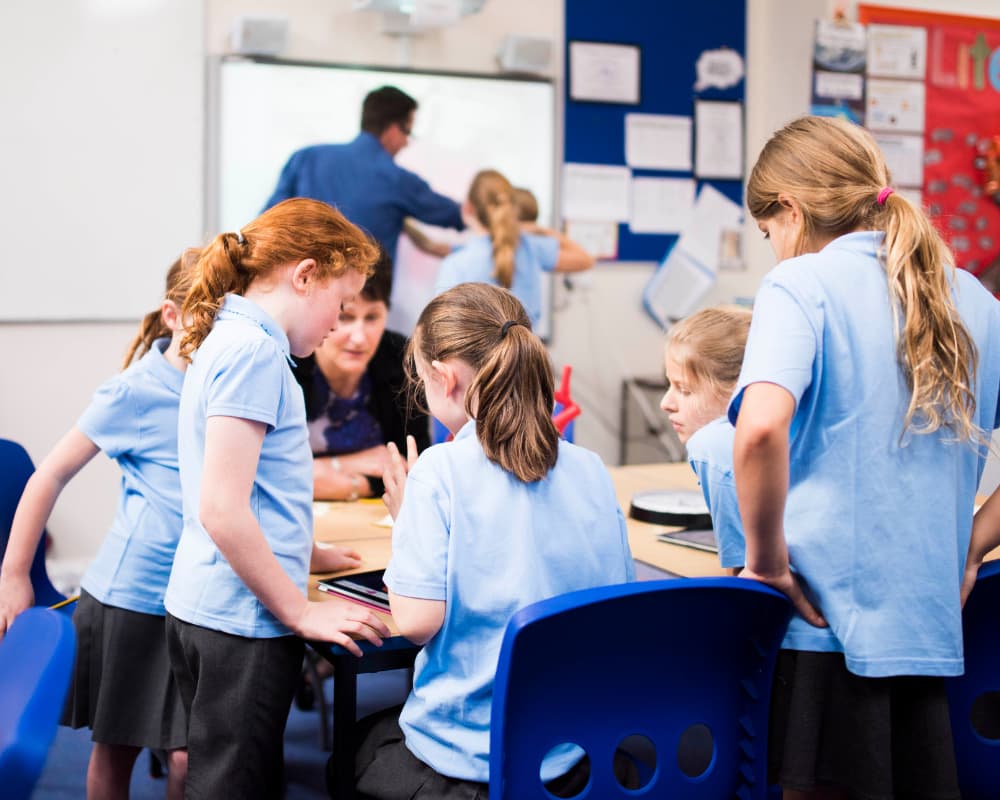What are the best ways to motivate students in the classroom?
With the new academic year in full swing, the excitement of a new school, classmates, and learning experience is bubbling over in your eager students. As a teacher, you’re not just an educator; you’re a guide, a mentor, and a source of inspiration for your student’s learning. But how can you harness that initial burst of enthusiasm and transform it into a sustained flame of motivation that fuels their learning throughout the school year? In this blog, we’ll delve into practical insights and strategies, straight from a teacher’s perspective, to help you in the art of motivating and inspiring your students within the classroom.
Why is Motivation in Children Important?
Motivation plays a pivotal role in a child’s educational journey, serving as the driving force that propels them toward academic success and prepares students for the future. It’s not just about getting good grades; motivation is the spark that ignites curiosity, fosters a love for learning, and cultivates the skills necessary for personal and intellectual growth. When children are motivated, they are more likely to actively engage in their studies, take on challenges with enthusiasm, and persist in the face of obstacles.
Beyond the classroom, motivation empowers children to set and pursue their goals, build resilience, and develop a strong sense of self-efficacy. In this blog, we will explore the multifaceted importance of motivation in children and provide teachers with practical strategies to inspire and sustain their students’ motivation throughout the academic year.

How to Motivate Students to Learn
Motivating students is somewhat basic psychology. Think about what motivates you as an individual, students engage in subjects that they are interested in and ones they enjoy. To improve student motivation it’s essential to provide a supportive and engaging learning environment where their curiosity is nurtured, their individual strengths are recognised, and they are encouraged to take ownership of their deep learning.
Here are the top 7 ways teachers can improve student motivation in the classroom:
7 Ways Teachers Can Improve Student Motivation
At Connex, we believe that technology is broadly a force for good and where used appropriately and with the correct controls, it can significantly enhance the student and educator experience. Undoubtedly, there will be AI creeping into the classroom in many different ways, and we must learn to adapt, integrate where it can add genuine value and benefits, and police where it can be abused. Only by being vigilant, adapting to change, and remaining aware of the various fast-paced technological changes can our education system continue to provide the high-quality service it does to our nation’s students.
1. Get to know your students:
By taking a genuine and personal interest in each student’s learning you create a personal loyalty between you and your students. Try to understand your student’s needs, desires, and interests. When students feel appreciated and understood by their teacher, it creates a safe learning environment and motivates them to work harder.
Start by actively listening to your students, both in and outside of the classroom. Understand their individual needs, desires, and interests. By doing so, you’re acknowledging your students’ concerns and affirming their value as individuals.
2. Set realistic performance goals:
Set clear and achievable goals to help students track their progress and celebrate their achievements. If you teach older students allow them to have as much control over their education as you possibly can. Putting their own learning in the students’ hands not only prepares them for their future in the workplace but encourages students to conduct deeper learning and have their own motivation when it comes to future opportunities.
3. Positive Classroom Environment with Engaging Teaching Methods:
Crafting a positive learning environment using engaging teaching methods is essential for motivating students. Ensure your classroom is a welcoming and encouraging space where students feel comfortable participating actively. Employ interactive and captivating teaching approaches, including hands-on activities and multimedia resources. By fostering an atmosphere of curiosity and involvement, you stimulate students’ motivation, making learning an exciting and enjoyable journey. This positive classroom setting, combined with engaging methods, fuels their enthusiasm for learning.
4. Be free with praise and give constructive criticism
Provide timely and constructive feedback to help students understand their strengths and areas for improvement. Offer timely and constructive feedback to help students recognize their strengths and areas for improvement. Encourage students to undertake self reflection when it comes to critiquing their own work. By doing so, you empower students to take ownership of their learning journey, boosting their motivation to strive for excellence. Effective feedback, delivered with a balance of praise and guidance, fosters their commitment to continuous improvement and reinforces their sense of achievement.
5. Make Learning Relatable
Help students find a connection between lessons and their personal interests, as well as real-life applications, to ignite their intrinsic motivation for enduring enthusiasm in learning. Understand their unique interests and incorporate them into lessons, demonstrating that their passions have a place in the classroom. Emphasize how the knowledge they gain applies to their daily lives and future careers. Encourage independent exploration aligned with their interests, granting them ownership of their learning journey. This approach helps students find a lasting passion for education that extends well beyond the classroom.
6. Offer external rewards
When your students achieve their classroom goals, one way to keep student motivation high is to offer them a reward for their success. Now this can range from giving out prizes, food, or a certificate they can take home, give your students options and encourage a growth mindset. It is one of the most basic psychological approaches, by incentivising and giving students their own reasonable goals, which has a reward it leads to extrinsic motivation within the students learning.
However, be aware of other students and avoid dividing students when it comes to rewarding them for good grades and particular performances. Keep the rewards for each same or give students options where they can choose their own prize from a selection. From this, you can encourage them to set their own reasonable goals to get students excited about their own education and the learning process.
7. Become a role model for students
As a teacher, you’re a powerful motivator. Show your passion for learning to inspire students. Demonstrate values like respect and perseverance, creating a motivating atmosphere. Your resilience in facing challenges encourages your problem-solving skills. Foster curiosity and critical thinking, igniting their intrinsic motivation. Embrace feedback and continuous learning, exemplifying that motivation is a lifelong pursuit. By being a motivating role model, you not only teach but also inspire students to become enthusiastic, self-driven learners, impacting their motivation and drive to succeed.

How Does Motivation Impact Behaviour and Performance?
Motivation is a powerful force that profoundly influences behaviour and performance. When students are motivated, they exhibit purpose-driven actions and enhanced determination, directly impacting their choices and outcomes. In education, motivated students are more engaged, complete tasks, and develop valuable skills like time management and goal setting. In essence, motivation is the driving factor behind improved behaviour and heightened performance, turning potential into tangible achievements.
Instill confidence and a safe environment in your classroom
As an educator, you can only do so much when it comes to keeping students motivated in their own education. Your role as their teacher is to ensure students have a safe learning environment, where they can take a personal interest in the classroom learning objectives and appropriately challenge them when students feel de-motivated.
To summarise, motivating and keeping students engaged in the classroom is a complex yet essential task for every educator. By understanding the importance of motivation, adopting effective strategies, and creating a positive learning environment, you can help your students unlock their full potential and embark on a lifelong journey of learning. Remember, you are not just teaching subjects; you are nurturing minds and shaping futures.


